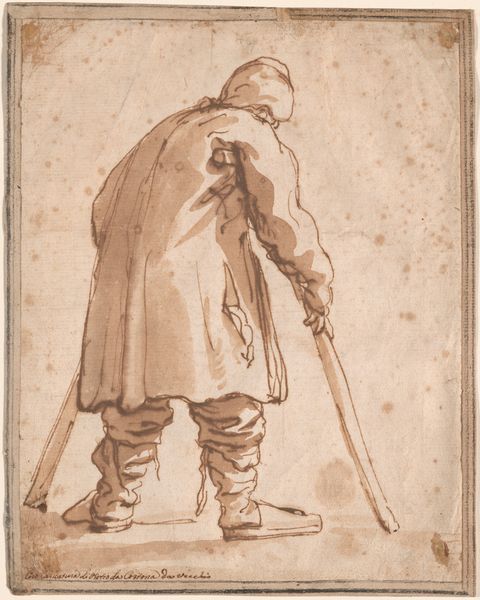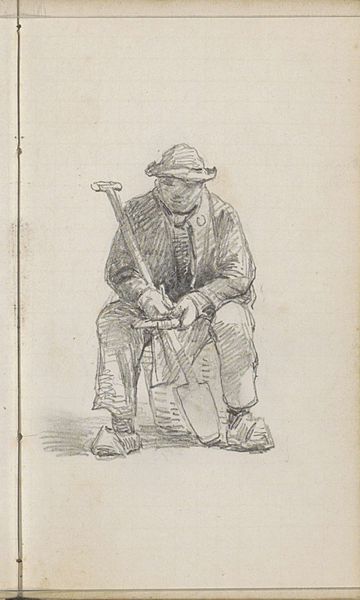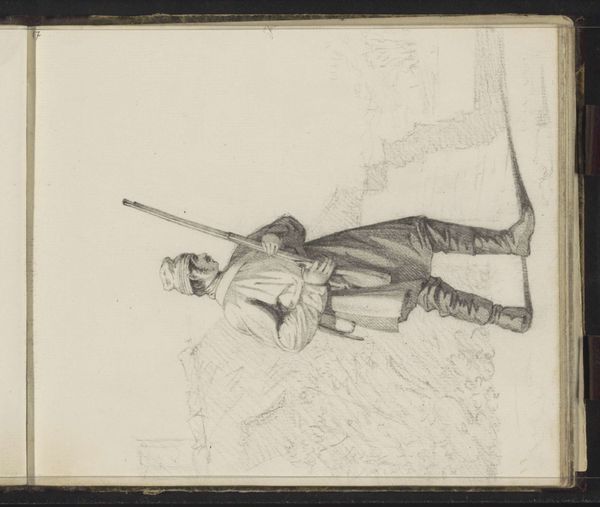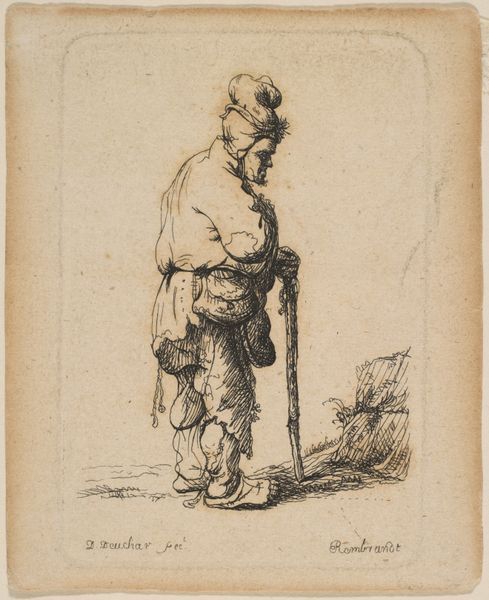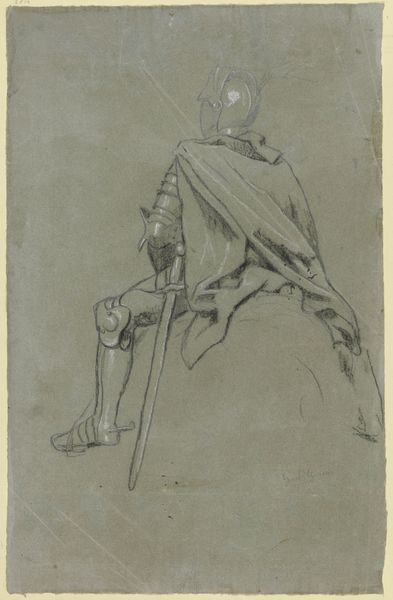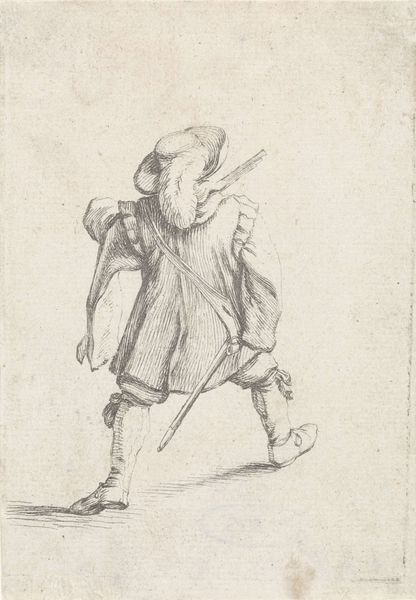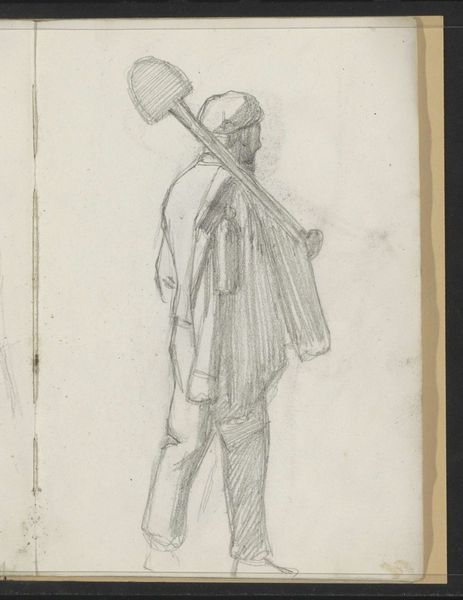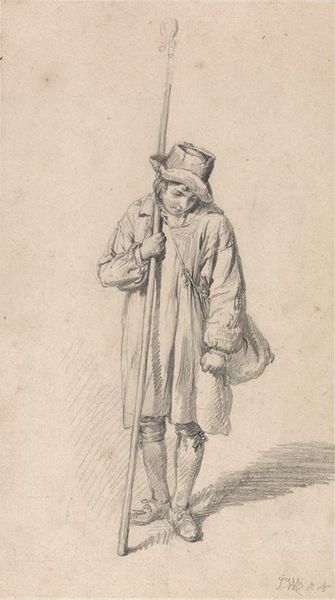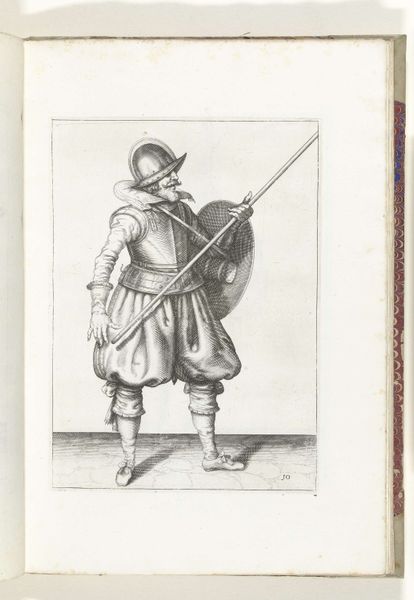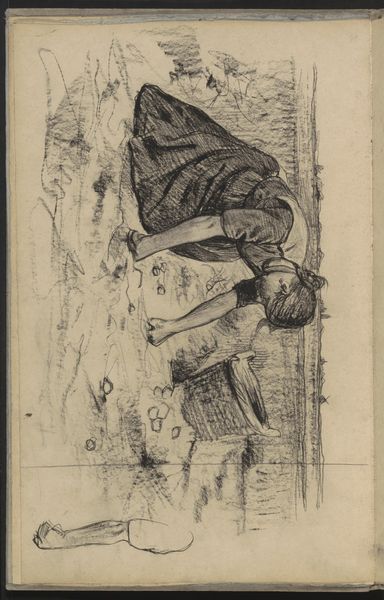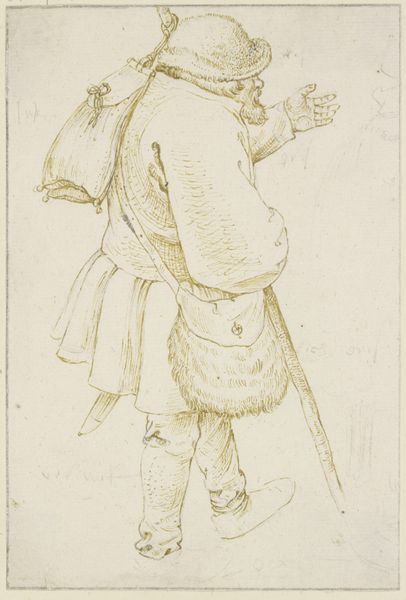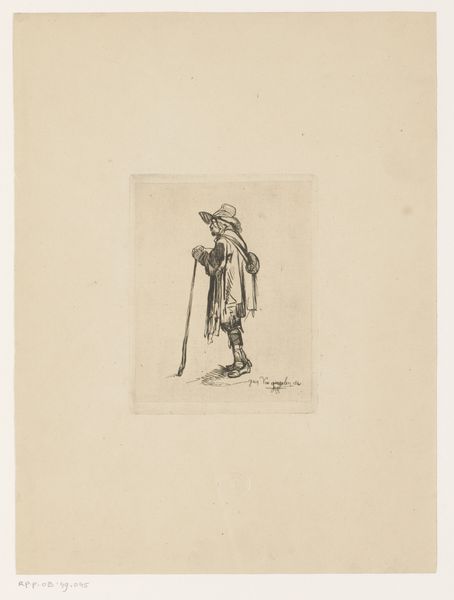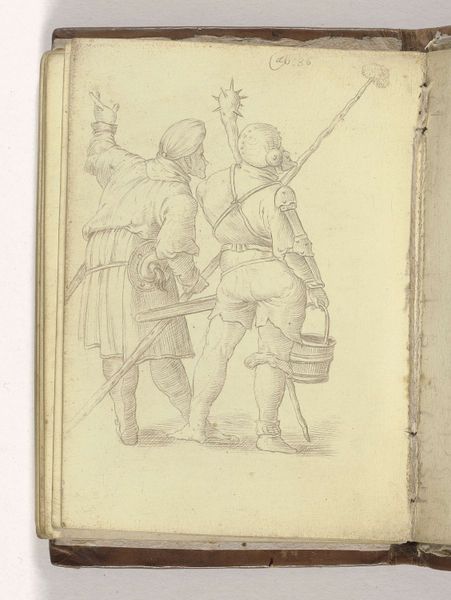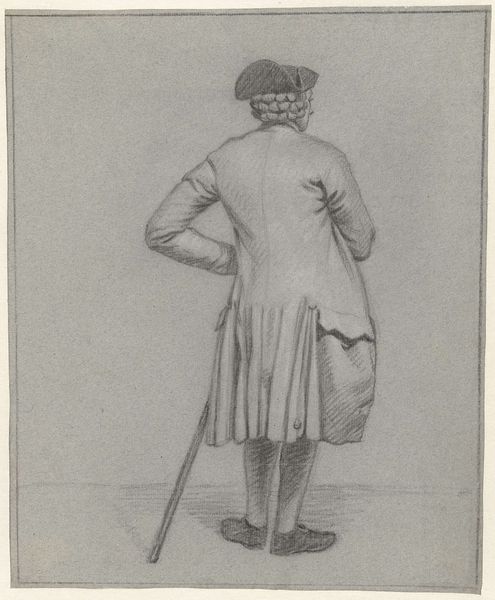
drawing, pencil
portrait
drawing
pencil
genre-painting
northern-renaissance
Dimensions: height 105 mm, width 78 mm
Copyright: Rijks Museum: Open Domain
Curator: This delicate pencil drawing, made around 1586, is titled “Beggar, Seen from the Back.” Though currently attributed to an anonymous artist, it resides now in the collection of the Rijksmuseum. Editor: A rather melancholic start, wouldn't you say? The hunched posture, the worn clothes… It practically sighs off the page. There's something haunting about a person rendered only by their retreating back. Curator: Indeed, the image certainly speaks to the vulnerability inherent in the life of a beggar. We see him from behind, supported by his sticks, his few belongings slung over his shoulder… It makes you wonder what exactly is in that satchel? Hopes? Memories? Crusts of bread? Editor: He becomes almost archetypal, doesn't he? A universal symbol of hardship. Notice how his gaze tilts slightly upward—there's a hint of optimism despite the clear struggles. The upward look always signals something beyond, right? Yearning for a kind fate, a full belly, the kingdom of heaven even? It speaks to the endurance of the spirit. Curator: Or, perhaps he looks upward towards the patron or benefactor. During the Northern Renaissance, genre paintings that included peasants, beggars, and everyday figures were both truthful representations and often employed as vehicles for satire. Maybe the angle of his face is supposed to signal the viewer on how to look down, maybe he's doing that to us, too. It all comes together to make a commentary on social stratification. Editor: Fascinating. And the subtle details within this simple drawing add to that impact. I'm drawn to how softly his garment renders. They seem both thin, light, and insubstantial. Do they protect, or signal an outward form? And his staff and walking stick, which we now recognize are classic signs of pilgrimage or deprivation, serve to keep the body from complete surrender to the earth. Curator: Yes, they underscore his tenuous balance, his reliance on meager aids. I’m intrigued by its almost timeless quality. You know, hardship persists across eras. Even today, it resonates, echoing across centuries. Editor: Absolutely. Though drawn centuries ago, the human spirit depicted here still flickers with a quiet dignity.
Comments
No comments
Be the first to comment and join the conversation on the ultimate creative platform.
